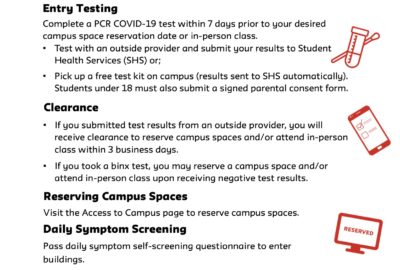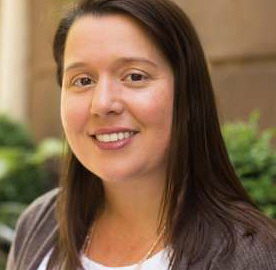A former planner and administrator with the Metropolitan Transportation Authority, Philip Mark Plotch (PhD ’14) is an associate professor of political science and director of the master of public administration program at Saint Peter’s University in Jersey City, NJ. He is the author of the recently published Last Subway: The Long Wait for the Next Train in New York City.
Originally posted on Urban Matters, a publication of the Center for New York City Affairs.
Urban Matters: Last Subway tells the nearly 90-year-long (and counting) saga of building New York City’s Second Avenue Subway. In the process, you sketch a history of the entire subway system that describes the many, many, near-death experiences it has had. The Covid-19 pandemic looks like another – and it’s a doozy. By mid-April subway and commuter rail ridership was down more than 90 per cent; the fare revenue essential for day-to-day operations was in a tailspin.
How does this compare to the disaster cliffhangers of the past? Does history offer any lessons about how to get subway operations back on track now?
Plotch: The New York City subways have gone through one crisis after another. Inflation during World War I bankrupted the private companies that built and operated the subway lines. The system survived the Great Depression, World War II, the middle-class flight to the suburbs, and a fiscal crisis that almost bankrupted the city. The days after September 11th were very much like the current crisis. It was not clear whether millions of people would feel safe again working, living, and traveling around New York. It is easy to be scared by today’s headlines, but you have to remember that the city is remarkably resilient when we identify our problems and address them head on.
UM: Congress voted $3.9 billion for the Metropolitan Transportation Authority in the first federal stimulus package in March. Now the MTA says it must have billions of dollars more. Are they right? Will even that be enough to stop the bleeding in the MTA budget? Are there other ways to balance the operating budget?
Plotch: In fact, the MTA’s financial situation is even worse than you think. The MTA’s operating budget relies on fares, tolls (including at the Midtown Tunnel, Whitestone Bridge, and RFK Bridge), and taxes (retail sales, real estate, payroll, petroleum, etc.). Every single one of those revenue sources has collapsed. Moreover, the MTA will not be able to borrow as much money as it had hoped to upgrade its aging infrastructure. Yes, the MTA could cut some expenses and find efficiencies, but there is no magic bullet to solve this financial problem. Just like a skyscraper needs elevators, our city depends upon an extensive transit system. The funds to operate, maintain, and upgrade it require some combination of fares, tolls, and taxes.
UM: From 1992 to 2005 you managed policy and planning efforts at MTA headquarters. This might be a traumatizing question, but if you had that job today, what would be the first set of things you’d focus on or want to achieve?
Plotch: Planners should always listen to their customers, prepare for potential threats, and identify promising opportunities. It is important to think about how the transportation system will function in 2020, but it is critical to think long-term. We will get over this coronavirus and New York needs a transit system that can compete with its competitors around the world. That means higher-quality services and better-maintained facilities that are protected from changes to our climate.
UM: The MTA started the year with a $51.5 billion capital budget intended for system upgrades, keeping the subway and bus systems in a state of good repair, and accessibility upgrades at subway stations. However, a big chunk of that money was supposed to come from congestion pricing fees for driving into Manhattan during peak hours. Do you think congestion pricing is going to happen on schedule in 2021 – or ever?
Plotch: Our State legislators should be commended for their decision to toll drivers entering Manhattan below 60th Street. This congestion pricing program will reduce traffic, improve air quality, and speed up travel time for police, firefighters, ambulances, and delivery vehicles. Congestion pricing will also raise billions of dollars for the beleaguered transit system. Elected officials do respond to their constituents, so if enough people (including Urban Matters readers) tell their State senators and Assembly members that it is an important initiative, then it will be implemented within the next couple of years.
UM: Rightly or wrongly, a lot of people think subway riding contributed to the spread of the coronavirus, and helps explain why New York City has been hit so hard in this pandemic. But there’s no New York City without the subways – so how do you convince people that riding the subways won’t make them sick?
Plotch: The MTA is talking about disinfecting trains and buses, but anyone’s grandma can tell you that will have limited effectiveness. We are going to have to be much more careful in every crowded situation, whether that means requiring face masks, installing hand sanitizers, promoting social distancing, or checking people’s temperatures. We are not the first generation of New Yorkers to adjust our behaviors. At the height of the 1918 influenza pandemic, New York City instituted staggered work hours to spread out ridership during the day. Thankfully, they also cracked down on spitting.
UM: There’s a lot of speculation that remote working and learning will become the new normal for a lot of workers and students. Do you think subway ridership is likely to get back to the levels we saw just a few months ago?
Plotch: Unfortunately, transportation planners do not have crystal balls. Subway ridership depends on all sorts of factors that are obviously impossible to accurately predict, such as economic conditions, and where people choose to live, work, and socialize. I hope that ridership does return because it will be a sign that New York has rebounded. I never thought that I’d say this, but I’m almost a little nostalgic for Penn Station at rush hour.
UM: Last question: Before Covid-19, completing the rest of the Second Avenue line – its extension north through East Harlem to 125th Street and south to Hanover Square in Lower Manhattan – was scheduled to take another 30 years. What do you think now? Fifty years? One hundred years? Is it ever going to be finished as planned?
Plotch: Let’s do the math. Since it took almost 100 years to build about one-quarter of the Second Avenue subway line that means they should finish the whole thing in about 300 more years. But I’m optimistic, and will bet that it reaches Lower Manhattan by the end of this century. You are certainly not the first person to ask this question. In 1976, when the MTA chairman was asked whether the Second Avenue subway line would ever be completed, he responded, ‘‘Well, ‘ever’ is a long time.’’



